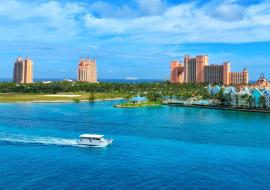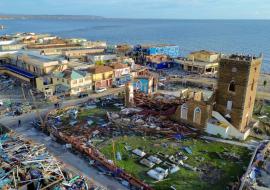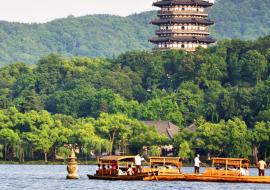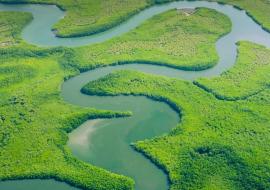The Countdown of America’s Top Landmarks
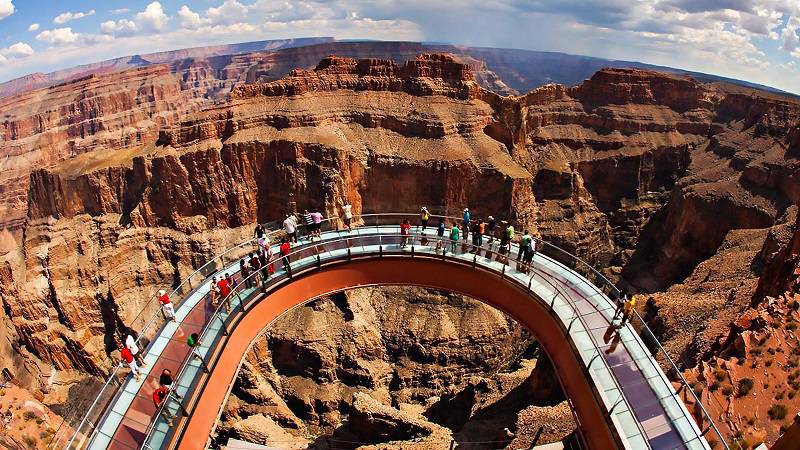
America the beautiful. The United State is not just the land of the free and the home of the brave, but it boasts enough iconic landmarks that it would take the average traveler a whole lifetime to see them all.
Whether it's natural beauty or man-made brilliance, there are things to do and see all across America, and some of those things to see are truly bucket list items.
But, considering that time is limited and resources aren't always plentiful, if you had to pick just one of these American landmarks to visit, which would it be?
We've put together this power ranking of the top landmarks in America to perhaps make that decision a bit easier. And of course, if you disagree and would put one ahead of the other, feel free to let us know. Part of the fun of travel is that beauty is in the eye of the beholder. Without a doubt, though, these ten places have something for everybody.
10. Hoover Dam
The Hoover dam is as impressive as it is efficient. Seen from above, it's a stunning display of human ingenuity. When actually at the dam, though, the scope of its magnitude is truly felt. The dam is 726.4 feet tall and weighs more than 6,600,000 tons.
It became operational in 1935 and remains operational to this date. It stops off the Colorado River and played a major role in the development of cities such as Los Angeles, Las Vegas and Phoenix.
According to the History channel, the Hoover dam is capable of irrigating two million acres of land and it can power 1.3 million homes. Millions of people visit the Hoover Dam yearly, making it one of the top tourist attractions in the world.
9. Mackinac Bridge
Hours north of Detroit, the Mackinac Bridge may not get the foot traffic and due it deserves. With that said, it truly is one of the modern architectural wonders of the world, and it's certainly a must-see if you ever find yourself in Northern Michigan.
The Mackinac Bridge is currently the fifth longest suspension bridge in the world and it's the longest suspension bridge in the western hemisphere. It's 26,372 total feet long with the length of the actual suspension bridge checking in at 8,614 feet.
Opened to the public in 1957, it connects Michigan's lower peninsula to the upper peninsula, acting as an important roadway as well as a tourist destination in the process.
Depending on the weather and time of year, the trip over "The Mighty Mac" can be an awe-inspiring one, as Northern Michigan is generally a beautiful region, especially in the summer and fall.
Beware, though, because in truly inclement weather, the bridge is built to sway as much as 35 feet East or West in high winds.
8. Empire State Building
The Empire State Building is truly one of the most iconic skyscrapers in the United States. Perhaps its most famous for the gorilla who once climbed it, but there are plenty of other reasons to check out the tallest building in New York City.
Built during the middle of the Great Depression in 1931, the Empire State Building is 1,454 feet tall -- currently checking in as the 9th tallest building in the world. The building itself has starred in nearly 100 films over the years, and has a handful of observatories where tourist can see breathtaking views of New York City and more. In fact, on a clear day, visitors at the observatories can see five different states: New York, New Jersey, Pennsylvania, Connecticut and Massachusetts.
The Empire State Building is such an important New York Landmark -- especially from a business perspective -- that it actually has its own zip code: 10118
7. Golden Gate Bridge
The Golden Gate Bridge is breathtaking, and it can provide many different experiences depending on the weather of the Bay Area.
When the fog rolls into the bay, the Bridge acts as a literal bridge through the clouds. On a sunny day, San Francisco, Oakland, the marine headlands and the prison island of Alcatraz are all well within viewing distance.
Speaking of the marine headlands, there's perhaps no better view of the bridge than from above it, nestled in the cliffs and paths of the less famous side of the bridge.
The Golden Gate Bridge attracts more than 10 million visitors a year, making it a must-see for travelers.
6. The White House
There's no building more iconic in the United States than the White House -- the literal house of the President and the centerpiece of the United States' government.
Not only is it a beautiful, regal structure, but it boasts enough history to fill books upon books. It's one of the great monuments of the American republic.
George Washington selected the site for the White House all the way back in 1791 and President John Adams was the first one to move in, though it was still incomplete in 1800. In 1814, the White House was set on fire by the British, but it was back in action hosting a president by 1817, when President James Monroe moved back in.
Some of the most influential men and women in the history of not just the United States, but the world, have set foot inside the White House.
5. Gateway Arch in St. Louis
Seeing the Arch on television or in pictures doesn't do it justice. It's when you stand right next to it, looking up, that the architecture, design and beauty of it truly come into focus.
The Arch was completed in 1965 as a memorial that celebrates the westward expansion of the early settlers of the United States. It's literally called "The Gateway to the West"
The Arch is instantly synonymous with the City of St. Louis, but it's without a doubt an American icon.
The best part about it is that it's not just something for the eye to marvel at. Visitors can actually go inside and to the top of the Arch via a tram system. The Arch is 630 feet tall (63 stories) and weighs 43,226 tons. It's made of steel and concrete -- a true masterpiece.
4. Niagara Falls
While all of the landmarks mentioned above are man-made, there's very little about Niagara Falls that man can take credit for.
The falls are shared -- basically split in half -- between the United States and Canada. Niagara Falls State Park is the oldest State Park in America. According to the state park website, 3,160 tons of water go over the falls every second. That water hits the base of the falls with 2,509 tons of force at the Horseshoe portion of the falls and four of the five Great Lakes pour into it on a daily basis.
As a modern-day tourist, people can view the falls from the walkways adjacent to them, but they can also take a Maid of the Mist boat tour to actually go down into the water and experience the falls -- and all the mist created by them -- up close and in person.
Just be sure to keep your barrels at home, because that's always a bad idea.
3. Statue of Liberty
There are few things more synonymous with America than the Statue of Liberty.
Built as a joint monument between France and the United States, the Statue became a monument to freedom for millions of immigrants who came to America in search of a better life and opportunity. "The New Colossus", her famous Poem, was the heartbeat of new Americans and the foundation of the United States as we know it today.
The total height of "Lady Liberty" from base to the tip of her torch is 305 feet, six inches.
2. Mount Rushmore
Located in South Dakota, Mount Rushmore is a monument to some of the greatest Americans of all time, literally carved into the side of a mountain -- completed in 1941.
It memorializes Washington, the first president of the United States, Thomas Jefferson, the third president, Theodore Roosevelt (26th) and Abraham Lincoln (16th).
Mount Rushmore is worth visiting not only for its history, but for its beauty.
The craftsmanship displayed by the creators is remarkable. Remember, these are giant heads on a side of a mountain, but they look as if they could have been created in a workshop -- not the wild outdoors.
1. Grand Canyon
There's no natural beauty in the United States quite like the Grand Canyon. It's literally breathtaking, and if there's only one American landmark that you're able to see, make sure this is the one.
Considered one of the seven natural wonders of the world, the Canyon was slowly but surely built over time because of erosion due to the Colorado River. It's 277 miles long and ranges from four to 18 miles wide. It's over one mile deep and boasts a number of adventures for visitors -- whether it be hiking, camping, white water rafting or simply soaking up its beauty from the rim.
Source: Travel Pulse








